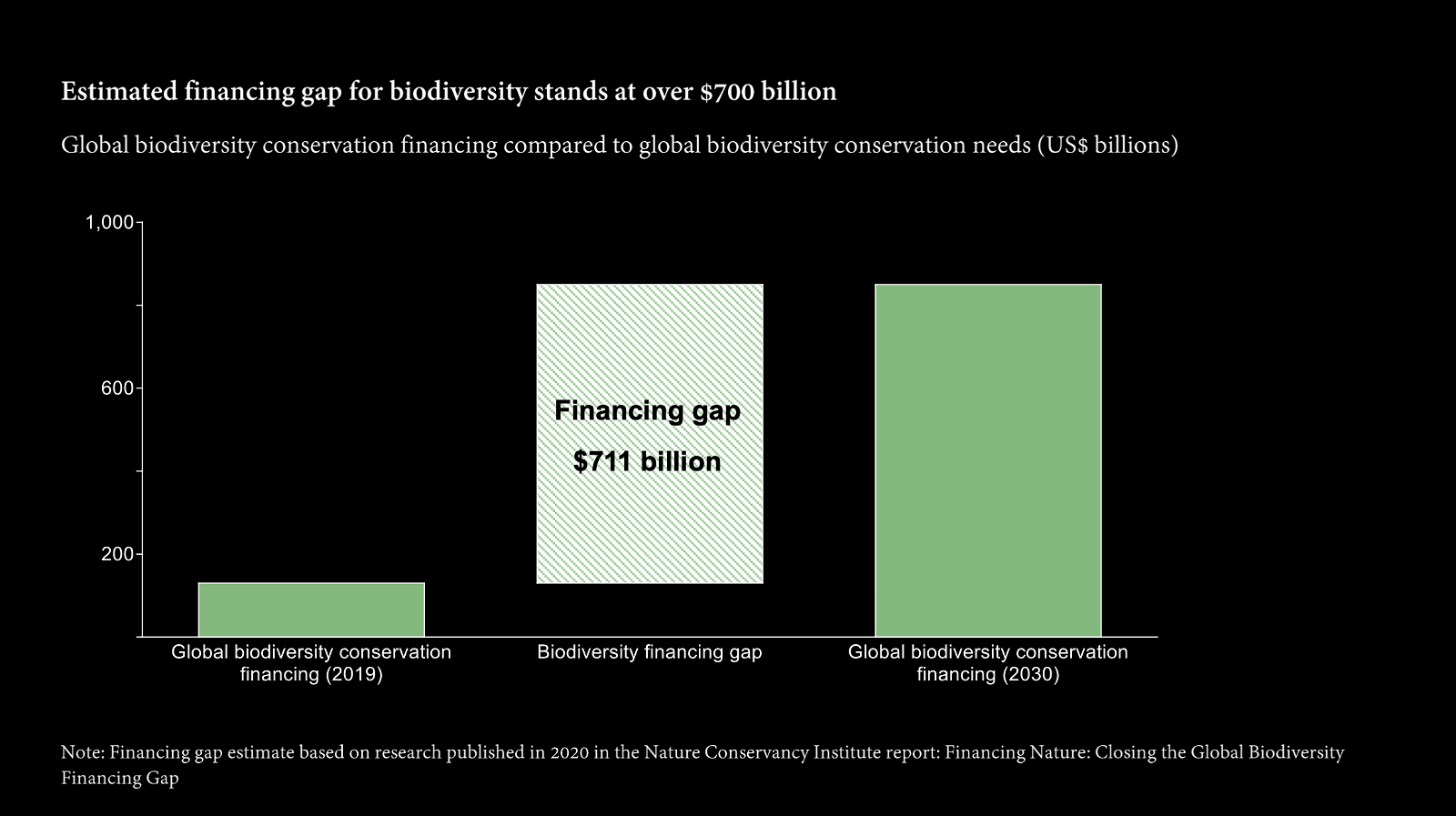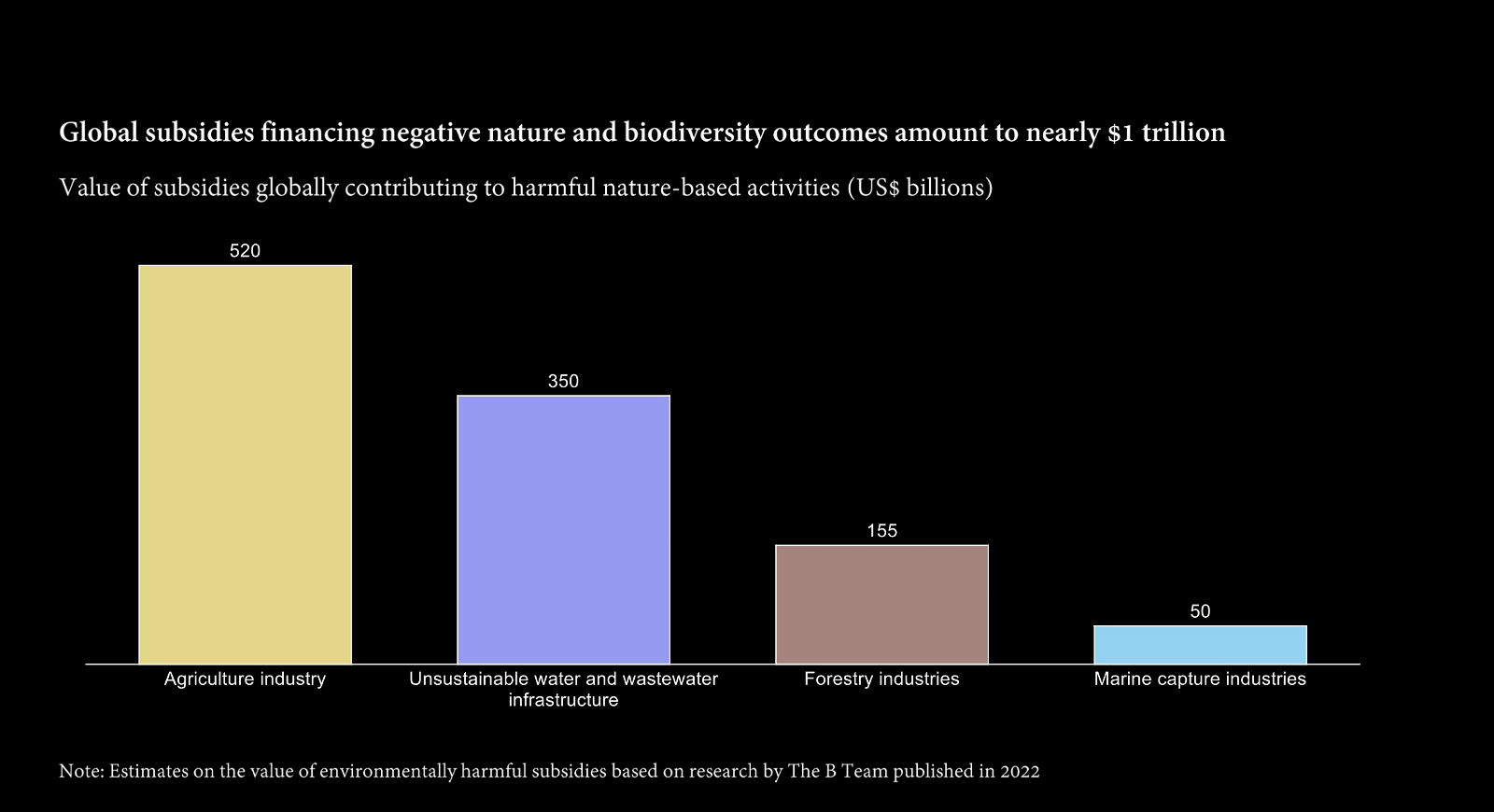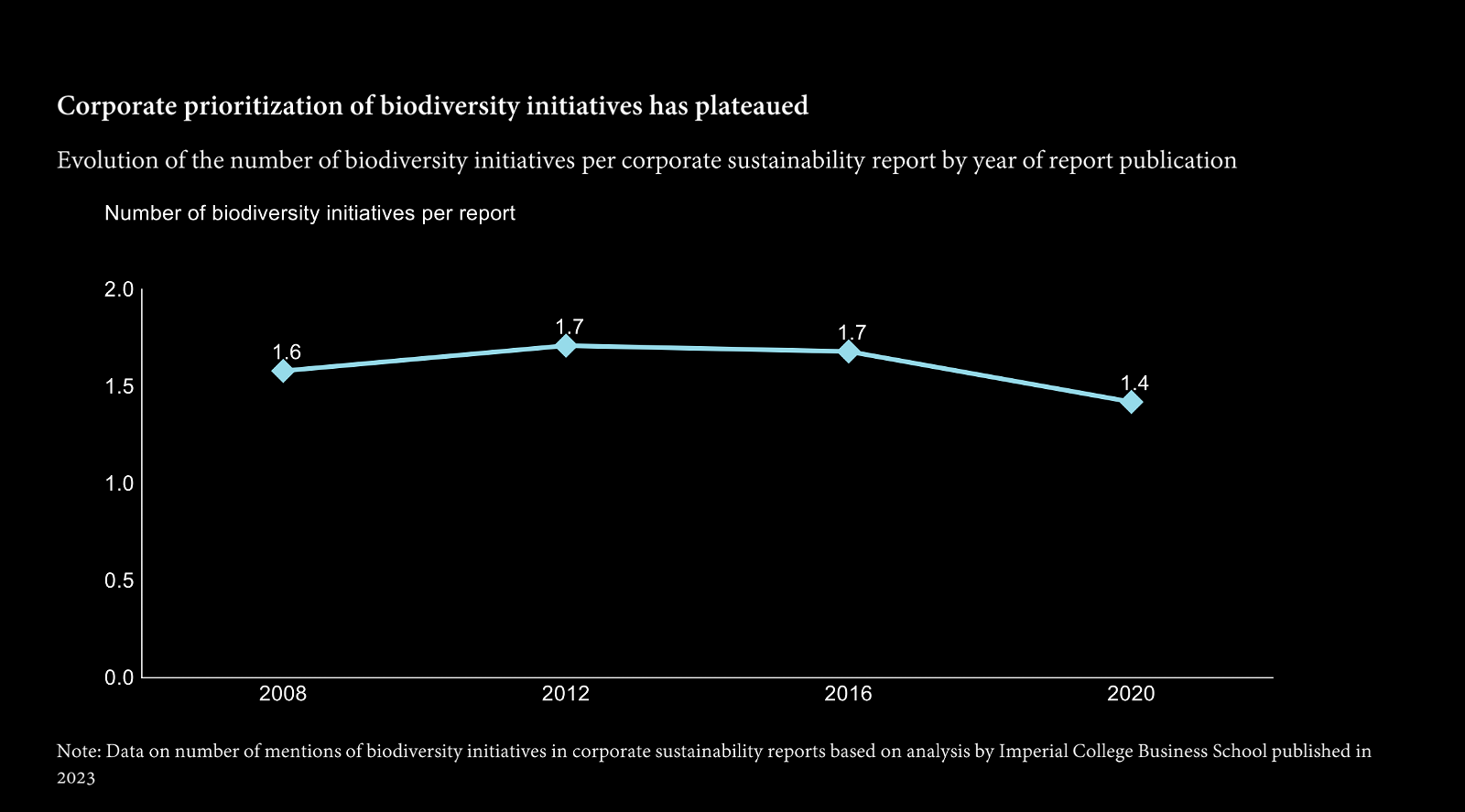Nature’s turning point? Mobilizing global efforts for nature and biodiversity at COP28


· 5 min read
Is nature finally getting the attention it deserves from climate policymakers?
Nature has long been mentioned as the next frontier of sustainability. Rightly so: over 50% of global gross domestic product (GDP) is ‘moderately or highly dependent’ on nature and ecosystem services, according to the World Economic Forum.
But, so far, carbon-centric climate discussions have relegated biodiversity, land, and ocean preservation as second-order priorities.
The tide may well have turned.
Over the last twelve months, encouraging developments in the sphere of nature and biodiversity suggest that this imbalance is being addressed. In December 2022, the delegation at COP 15 – the UN’s Biodiversity Conference –collectively agreed on a clear set of goals and targets to stem the growing biodiversity crisis.
Then, in September 2023, an agreement was reached on the Taskforce on Nature-related Financial Disclosures (TNFD) – a set of guidelines seeking to improve the level of reporting on nature-related dependencies among organizations.
The upcoming COP 28 conference can catalyse further progress through its roundtable on ‘nature, land use and oceans’.
To make significant headway in promoting nature-related sustainability strategies among public and private entities, three critical challenges that must be addressed.
When it comes to nature preservation, the financial cost of inertia is sky-high: World Bank estimates that a collapse of ecosystem services would cause annual losses of $2.7 trillion by 2030.
This figure is even more alarming when compared to the lack of existing financial support for nature-related initiatives.
Analysis by The Nature Conservancy suggests a shortfall of over $700 billion between current investment in nature and to the level required by 2030.

The magnitude of the delta – a nearly seven-fold increase required to meet required 2030 financing levels – highlights the level of historical neglect towards nature and biodiversity, driven partly by the dominance of carbon emissions at previous climate summits.
At COP28, a coordinated strategy towards nature-based financing can unlock new investment inflows. Promoting and exploring innovative financing mechanisms, such as green bonds or nature-based investment funds, will be critical.
As well as ways to promote ‘nature-enhancing’ capital, leaders must also consider ways to reduce ‘nature-degrading’ capital. This demands a critical reassessment of public subsidies, which frequently undermine efforts to safeguard natural environments.
A recent report from The B Team assessing the level of ‘harmful’ capital found that $520 billion goes towards the agriculture industry in subsidy support each year, funding unsustainable agricultural activities that with such harmful consequences as soil erosion, water pollution, commodity-driven deforestation.
Agriculture is just one example: subsidies are also promoting unsustainable use of water and forest and marine resources to the amount of nearly $1 trillion per year, equivalent to over 1 percent of global GDP.

This research is aligned with UNEP, which estimates that government subsidies harmful to biodiversity outweigh the total current positive biodiversity finance flows by at least a factor of four.
Given its geopolitical clout, COP28 discussions should prioritize ways in which such subsidy mechanisms can be redesigned, reduced, or redirected away from ‘nature-degrading’ uses.
This includes overhauling agricultural subsidies to promote regenerative farming, enforcing strict regulations on resource extraction, and fostering public-private partnerships for ecosystem restoration projects.
Beyond the public sphere, driving greater corporate activity towards nature-related considerations must also be a priority at COP28.
Nature and biodiversity have traditionally remained a peripheral sustainability concern for global businesses. According to a recent report by HSBC in partnership with Imperial College Business School that analysed over 40,000 global corporate sustainability initiatives (based on the UN’s Sustainable Development Goals), just 6% were connected to biodiversity. Even more concerning, less than 0.5% were found to have links to ‘life below water’, promoting marine biodiversity.
Any increase in awareness of the impact of corporate activities on nature has not riven a corresponding increase in action. The same HSBC report shows that, compared to overall sustainability efforts, corporate initiatives focused on biodiversity have actually declined in the past fifteen years.
Evidently, whilst a handful of leading companies are setting biodiversity-related targets, the majority continue to neglect nature.

With representatives from some of the planet’s largest corporates in attendance, COP28 must include dialogue on nature-conscious business activity.
Improved corporate reporting is a low-hanging fruit. Corporations are currently hindered and disincentivized by a lack of standardized assessment and reporting frameworks on nature and biodiversity. Enhancing existing frameworks, like the CDP forest questionnaires and the TNFD LEAP approach, could serve as a significant impetus for corporations to pay more attention to nature-related considerations.
Alarming forecasts of economic losses due to ecosystem collapse have shone the spotlight on the urgent need for a coordinated strategy to bridge the vast investment gap in nature.
Despite this, developments of the past year have represented a positive signal intent that nature can no longer be ignored or demoted on the environmental agenda.
Significant barriers remain – notably insufficient financing, harmful subsidies, and corporate inaction. COP 28 represents a golden opportunity to lay the foundations for overcoming them. All eyes now turn to Abu Dhabi.
Future Thought Leaders is a democratic space presenting the thoughts and opinions of rising Sustainability & Energy writers, their opinions do not necessarily represent those of illuminem.
Subscribe to our COP28 newsletter here to get comprehensive coverage of the world's largest climate conference delivered straight to your inbox.
This article is featured in illuminem's Thought Leadership series on COP28 proudly powered by Tikehau Capital.
Barnabé Colin

Biodiversity · Nature
illuminem briefings

Biodiversity · Nature
illuminem briefings

Biodiversity · Nature
ESG News

Carbon Removal · Biodiversity
The Washington Post

Biodiversity · Nature
World Economic Forum

Green Tech · Nature